Are you looking for a tour in China to some off the beaten paths? Are you interested in having a tour from Tibet? And curious about what the cities along the great Silk Road route is like? Take a close look at this 14 days Tibet tour with Silk Road below. You will start from the roof of the world-Tibet and visit the world renowned Potala Palace, Jokhang Temple, Yamdrok Lake, Karola Glacier… From Tibet you will proceed to Qinghai Province and see the largest in-land lake in China-Qinghai Lake. Then to Gansu Province to see the greatest pass in the world-Jiayu Pass, and one of the Four Great Grottoes-the Mogao Grottoes. Finally, you will go to a few places in Xinjiang Province, like the special type of irragation system-Karaz Well, ruins of ancient cities-Gaochang Ruins and jiaohe Ruins… This tour is a great choice for those interested in Chinese history. You are just one click away from your Tibet and Silk Road Epic Culture tour!

Welcome to Lhasa! Your tour guide will meet you at the airport and transfer you to the hotel. On the way to the hotel, your guide will make a brief introduction to Lhasa and give some suggestions for traveling to high-altitude destinations. After checking in at the hotel, you can have a good rest. A kind reminder, try not to do any exercise, not even fast walking. Because you will probably end up with a high altitude sickness if you do so. However, don’t worry if you haven’t done exercise but still feel sick, it’s normal. And here are some tips to help you relieve the sickness.
Tips for alleviating high altitude sickness:
1. Buy some portable oxygen bottles and inhale oxygen from it when you have difficulty in breathing.
2. Have a rest immediately, reduce outdoor activities and keep a good mood.
3. Keep yourself warm to avoid catching a cold.
4. Have more meals a day but less food for each, and have more digestible food will also be helpful.
Today, your 14 days’ Tibet and Silk Road epic culture tour begins.
After breakfast, your guide will pick you up at the hotel and take you to the Potala Palace. The Potala Palace, a palace-style building complex, is located on Maburi Mountain in the northwest of Lhasa, the capital of Tibet Autonomous Region of China. The palace is more than 200 meters high and has 9 stories in total. However, it is interesting that you will find a 13-story building complex from the outside. It is said that the king of Tubo Kingdom(633-842) called Songtsen Gampo intended to establish a good relationship with the Tang Dynasty (618-907) and introduce advanced technologies and brilliant culture to Tubo, so he sent envoys to the Tang to propose to a princess. As the emperor of the Tang Dynasty agreed to marry Princess Wencheng to Songtsen Gampo, this king of Tubo decided to build a palace with 1,000 rooms for her, and this is the Potala Palace you see today.
Although the buildings of Potala Palace were built at different times, the designers took full advantage of the features of the landscape and successfully made the palace extremely majestic and harmonious. The Potala Palace was listed as a World Cultural Heritage Site by UNESCO in 1994.
After visiting the Potala Palace, your guide will take you to a local restaurant to have lunch. In the afternoon, you will visit the Jokhang Temple, which has a history of more than 1,300 years. A story goes that where the temple is located used to be a lake. Songtsen Gampo once promised to his concubine Princess Chizun by the lake that he would toss his ring and then build a Buddhist temple where it fell. Unexpectedly, the ring fell into the lake. At that moment, the lake shined brightly and the shadow of a 9-story white building appeared in the light. Then, a huge project which used 1,000 goats for carrying earth to fill the lake to build the temple began.
The Jokhang Temple is the most brilliant existing building during the Tubo period in Tibet, and after many times of renovations and expansions, it now covers an area of more than 25,100 square meters.
Around Jokhang Temple is the most prosperous business street in Lhasa called Barkhor Street. In the seventh century, Songtsen Gampo decided to build the Jokhang Temple and firstly built four small palaces around it. At that time, he moved to the small palaces with his concubines and officials to supervise the process of the project of building the Jokhang Temple. The four palaces are the earliest buildings in the street. Later, when the Jokhang Temple was completed, it attracted plenty of pilgrims. As time went by, a pathway around the temple was formed, and that was the original Barkhor Street. Now, the street, integrating religion, culture, tourism, and business, has become one of the most charming streets in China.
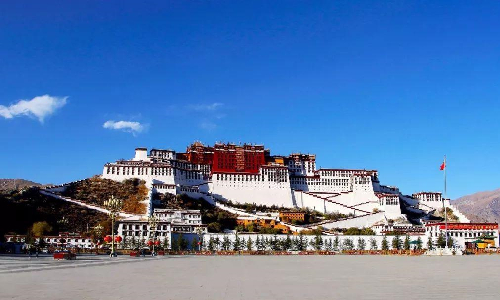
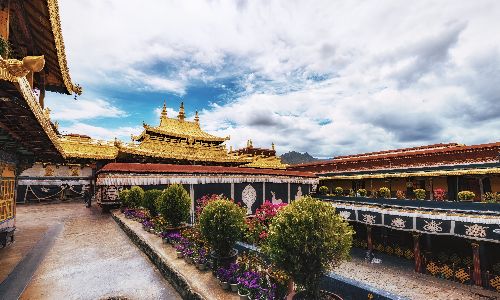
 Shigatse
Shigatse In the morning, you will have breakfast at the hotel and your guide will drive you to Shigatse, a city located about 275 kilometers away to the west of Lhasa. During the 5-hour driving, your guide will make a general introduction to this city.
After driving for about 2.5 hours (about 110 kilometers) to the southwest from Lhasa, you will see the Yamdrok Lake. Yamdrok Lake is one of the three sacred lakes in Tibet. Its surface is as calm as a mirror, and its water is as blue as sapphire, attracting numerous tourists every year.
Then you will continue to drive to the southwest for less than 2 hours to Karola Glacier. The huge glacier extends to the roadside (only about 300 meters away from the highway) and becomes the glacier closest to the highway in Tibet. Several movies have shown the scenes of Karola Glacier, which dramatically increased its popularity, but also brought it a disaster – a film crew exploded a triangular gap on the glacier to create a real scene of an avalanche. And since it is a fossil glacier, the gap cannot be made up forever. After visiting Karola Glacier, your guide will drive you directly to Shigatse and help you check in at your hotel.
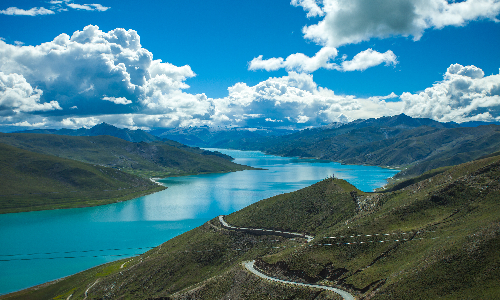
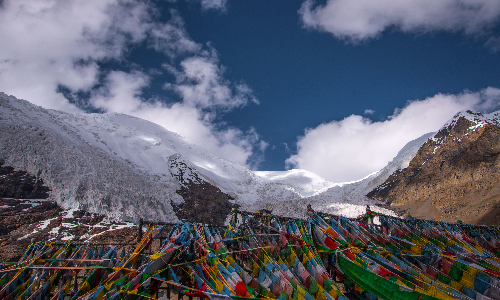
 Lhasa
Lhasa After breakfast, your guide will bring you to the Tashilunpo Monastery. Just as Potala Palace is the symbol of Lhasa, Tashilunpo Monastery is the symbol of Shigatse. Therefore, there is no one who goes to Shigatse without visiting Tashilunpo Monastery. Tashilunpo Monastery covers an area of 150,000 square meters, with 57 monks' houses as well as a total of 3,600 rooms and palaces. The murals in the monastery are distinctive. They are various in form, bright in color, and delicate in painting, and thus are regarded as masterpieces in Buddhist art. If you come in the right season, you will see a famous activity in the monastery, the Buddha Exhibition Festival. During the festival, three huge, exquisite embroideries of the Buddha are shown on a sidewall of a 32-meter-high platform. Monks in the Tashilunpo Monastery and believers from different places will show their homage to the Buddha, present Hada, kneel on the ground, and pray for auspiciousness and happiness. Another special scene in Tashilunpo Monastery is that many ownerless dogs gather here, basking and living harmoniously with people.
Lunch will be in a local restaurant. After a short break, your guide will drive you back to Lhasa. You may enjoy the beautiful scenery on the way, for example, the Yarlung Tsangpo River. Yarlung Tsangpo River is the longest river in the highland in China, and its source is at the foot of a glacier in Tibet at an altitude of about 6,020 meters, making it the river flowing from the highest location. Another must-see, Yarlung Tsangpo Gorge, is situated downstream of Yarlung Tsangpo River. It was discovered in 1994. The average depth of the gorge is about 5,000 meters, about twice that of the Grand Canyon Colorado in the US, and it is 56 kilometers longer than the Grand Canyon Colorado.
You will spend the night in Lhasa. If you are still energetic after the long journey, you can walk around and appreciate the wonderful night scene of Lhasa.
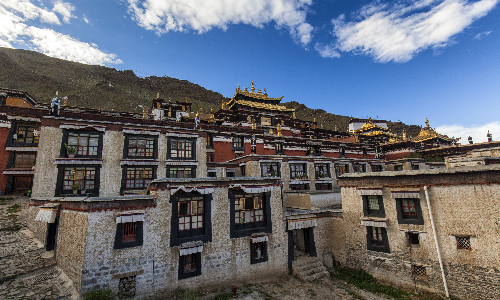
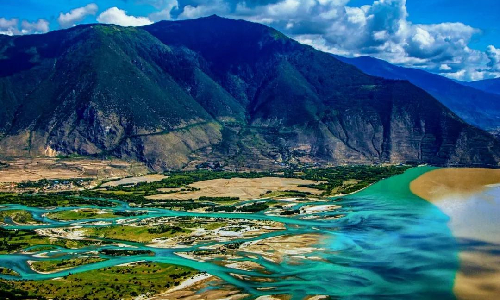
 Xining
Xining After breakfast, you will take an estimated train Z6802 09:00/06:29+1 to Xining, Qinghai Province. You will spend about 22 hours on the train and will arrive in Xining at around 6:29 the next morning.
The 1956-kilometer-long Qinghai-Tibet Railway is China’s first railway in highland. The average altitude in the west part of this railway is above 3,000 meters and the altitude of its highest point is 5,072 meters.
Trains running on the railway are equipped with special and luxurious sleeping carriages and dining carriages. Closed-circuit televisions, comfortable beds, sofas, and bathrooms are provided in private rooms in sleeping carriages. Besides, multiple oxygen-supplying devices are provided under the seats, on the wall of corridors, and in other places in case of an altitude sickness of the passenger. What is more, there are 115 medical institutions along the railway and more than 600 medical workers are on duty, so you don’t need to worry about feeling sick in the highlands.
You can appreciate the amazing scenery on the way to Xining. For example, you can see Nyenqentangula Mountains, Namtso Lake, Naqu Grassland and Qinghai Lake. Nyenqentangula Mountains have an average altitude of 6,000 meters, traverses the middle and east Tibet, and divides Tibet into three regions. It is said that there is a mysterious crystal palace in Nyenqentangula Mountains with gates inlaid with all kinds of shining gems, an ocean of sweet dew at its bottom, rainbows and colorful mist wreathing its middle part, and clouds floating over it.
Many lakes are located on the northwest side of Nyenqentangula Mountains, and one of them is the third-largest saltwater lake in China called Namtso. Namtso, one of the three sacred lakes in Tibet, has a surface altitude of 4,718 meters and covers an area of about 1,920 square meters. Three islands interspersing in the lake are called Islands of Birds because they are rarely disturbed by the outside world and can provide habitats for numerous birds.
In the folk songs and legends of local people, Nyenqentangula Mountains and Namtso are not only the most striking and sacred mountain and lake in Tibet but also a couple who have accompanied each other for many years.
Besides, you can also enjoy the immense Naqu Grassland on the train. Every August, a grand Horse-racing Festival will be celebrated here, attracting thousands of tourists, herdsmen, and businessmen.
You will have lunch and dinner on the train and spend your night here.
Your guide will meet you at Xining Railway Station in the morning and lead you to taste some special local foods, such as steamed noodles and hand-pulled noodles, or you can also have fast food such as Mcdonald’s if you like.
Then you will visit Ta’er Monastery. Covering an area of 450,000 square meters, Ta’er Monastery is a building complex with more than 1,000 yards and 9,300 rooms. Butter sculpture, mural, and padded-applique embroidery are the three unique arts of Ta’er Monastery. Meanwhile, numerous Buddhist classics and academic monographs related to fields such as history, philosophy, medicine, and literature are preserved in the monastery. According to its regulations, tourists must get dressed properly and behave themselves in the monastery. Otherwise, they won’t be allowed to enter.
Then your guide will lead you to visit Dongguan Mosque. During the reign of Emperor Zhu Yuanzhang in the Ming Dynasty (1368-1398), he dispatched a general called Mu Ying to guard the region in today’s Gansu and Qinghai provinces. At that time, they allowed the Muslims to hold their traditional religious activities. As the number of Muslims increased, Mu Ying asked for the emperor’s permission to build a mosque where the believers would gather and live to meet their religious needs. Soon, a mosque with a grand hall covering an area of 28,000 square meters and some auxiliary buildings were completed. This is the Dongguan Mosque you see today. Dongguan Mosque has always been an important place for religious activities of Muslims since its completion. Each time there is a significant activity, hundreds of Muslims living around will gather here, and it is quite a spectacle.
After lunch in a local restaurant, your guide will help you check in at your hotel. You may go around as you like or just have a good rest in the hotel.
Option:
If you want to go to a night market here, Mojia Street is a good choice. It is a street with a history of 600 years and is a street where you can enjoy all kinds of special Qinghai foods.
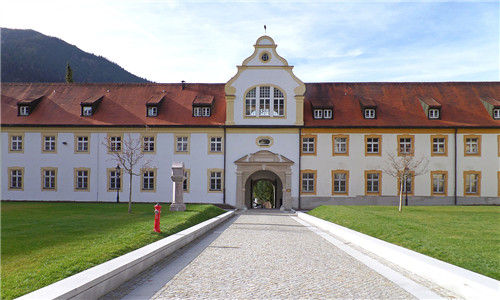
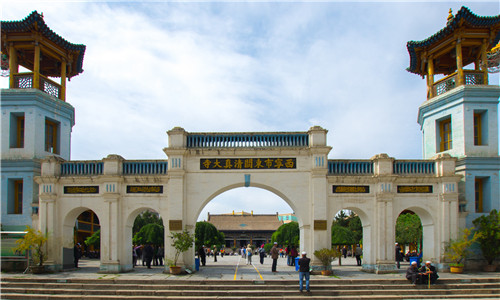
 Qinghai Lake
Qinghai Lake You will have breakfast at the hotel. Then your guide will pick you up to go to Qinghai Lake. Covering an area of about 4,543 square kilometers and having a perimeter of about 400 kilometers, Qinghai Lake is the largest saltwater lake in inland China. A historical story goes that 1,000 years ago, Princess Wencheng of the Tang Dynasty married Songtsen Gampo, the King of the Tubo Kingdom, to establish a good relationship with them. Before she set off to the remote Tubo, her father gave her a precious mirror named Riyue (literally meaning sun and moon in Chinese), which was able to show the images of her hometown. On the way, the princess missed her hometown so much that she took out the mirror to see her hometown. At the moment, she couldn’t help crying. However, as soon as she reminded herself of her mission, she determined to throw the mirror far away. Unexpectedly, a golden light appeared as soon as the mirror touched the ground, and where it fell became Qinghai Lake.
Since 2002, a road-cycling launched by the government of Qinghai Province has been held here from July to August every year, attracting bike enthusiasts from many countries.
Erlangjian Scenic Area, located in the southeast of Qinghai Lake, is one of the most famous scenic spots around the lake. Shopping malls, restaurants, and hotels here are constructed in distinctive Tibetan style.
Erlangjian Scenic Area is divided into two parts. The first part includes a square and streets around. The other part refers to the narrow, sword-shaped peninsula embedding in Qinghai Lake, with a length of over 10 kilometers. This peninsula is why the scenic area is named Erlangjian (“jian” means “sword” in Chinese). Besides, you can walk around to buy some souvenirs or visit the folk museums here.
After lunch, you will leave Qinghai Lake and come back to Xining, and you may visit Riyue Mountain and Daotang River on the way. Riyue Mountain played an important role in the connection and exchanges between the Tang Dynasty and other countries in history. For example, during the Northern and Southern Dynasties (420-589), the Silk Road in Gansu province was blocked, so business with the Central Asian countries was influenced. So a new road called the South Silk Road was built, which passed Riyue Mountain, Qinghai Lake, Qaidam Basin and finally connected the Central Asia region.
It is said that after Princess Wencheng threw the Riyue mirror, it broke into two parts, the Ri (sun) mirror fell in the east and the Yue (moon) mirror fell in the west, the two mirrors formed today’s Ri Mountain and Yue Mountain. After that, people built a pavilion in each of the mountains and named them Ri Pavilion and Yue Pavilion, and tablet inscriptions and murals in the pavilions record scenes when Princess Wencheng came to Tibet.
At an altitude of about 3,300 meters, Daotang River stretches more than 40 kilometers. It flows from Riyue Mountain in the east to Qinghai Lake in the west. As its direction of flow is different from most rivers in China, people named it Daotang River (Daotang means flowing in the opposite direction in Chinese). A story goes that the emperor of the Tang Dynasty married Princess Wencheng to Songtsen Gampo for cultural exchanges and a better relationship. When the princess came to Riyue Mountain, she looked back, but couldn’t see her hometown. Knowing that she couldn’t come back for the rest of her life, she felt homesick and missed her parents desperately, and cried bitterly. The tears of the princess gathered and became today’s Daotang River.

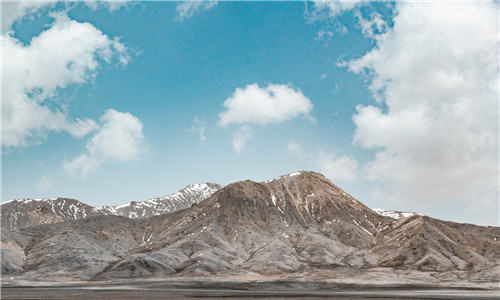
 Jiayuguan
Jiayuguan On the morning of the eighth day, you will take an estimated train D2743 08:59/12:16 to Jiayuguan after breakfast and you can have lunch in a local restaurant by yourself. In the afternoon, your guide will take you to visit Jiayu Pass, which is known as the greatest pass in the world. Jiayu Pass was built in 1372 in the Ming Dynasty (1368 - 1644) and was the west end of the Great Wall of the Ming Dynasty. In 1987, it was selected on the List of World Cultural Heritage Sites by the UNESCO.
An interesting story goes that a craftsman in the Ming Dynasty mastering arithmetic could tell the exact quantity of materials needed in buildings before the construction. However, the official supervising the construction of Jiayu Pass didn’t believe it and asked him to tell the number of bricks needed to build Jiayu Pass. The craftsman predicted that the total number of bricks would be 99,999. The official threatened to kill the craftsman and all the workers if he was wrong. Upon the completion, the official found that an extra brick was put on the cornice of the west gate tower and intended to execute the craftsman and other workers. But the craftsman told him the brick was a magic brick called Dingcheng Brick (means the brick that can steady the building), and the gate tower would fall apart if the brick was removed. In this way, they escaped from punishment, and the brick was left there on the cornice for hundreds of years. You can still see this brick today when you visit Jiayu Pass.
After visiting the pass, your guide will help you check in at your local hotel in Jianyuguan.

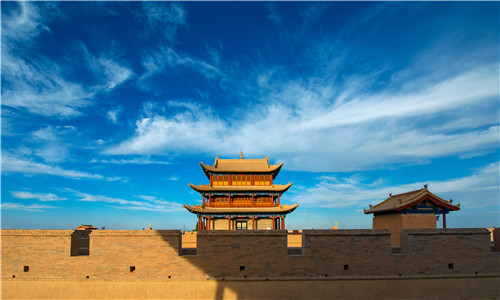
 Dunhuang
Dunhuang After breakfast, you will go to Dunhuang by taking an estimated train 7535 08:15/14:14, and you will have lunch on the train by yourself. In the afternoon, your guide will take you to Crescent Spring and Echoing Sand Dune.
According to a legend, the eminent monk Xuanzang of the Tang Dynasty had passed Dunhuang on his journey to the west. He couldn’t find any food or water in the vast desert here and his horse was dead, but he persisted in trekking to the west. When he was about to fall, the Avalokiteshvara changed a drop of sacred water into a spring shaped like a crescent to help him. For this reason, Xuanzang survived in the desert and was able to continue his journey. The spring was kept until today and people named it Crescent Spring according to its shape.
Echoing Sand Dune got its name because it can make a sound like singing when people step on the sand and when the wind blows. According to one of the local legends, this place used to be an oasis. It is said that in the Han Dynasty (202BC-220AD), a general headed an army to defeat the enemies in the west, but their enemy attacked them on the sneak at night. As the two armies were fighting, a gale suddenly began and buried them all in the sand, and hence Echoing Sand Dune was formed. People said that the singing of the sand came from the fighting of the two armies.
Free Time Suggestion:
If you are looking for somewhere to go at night, Dunhuang Night Market is a good choice. It is the largest night market in Dunhuang and is a place gathering all kinds of foods and handicrafts.
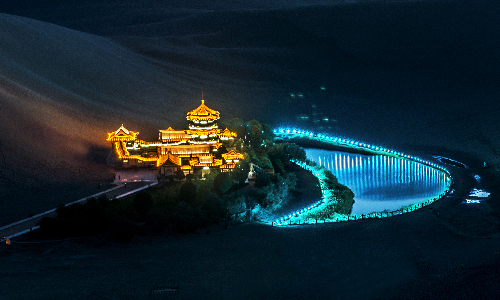
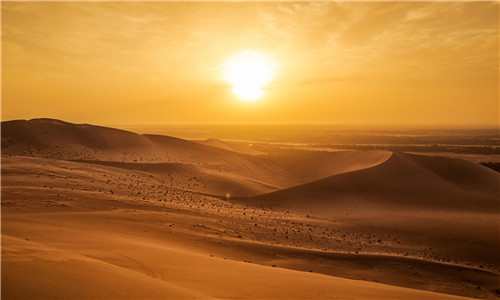
 Liuyuan
Liuyuan Turpan
Turpan You will visit the Mogao Grottoes after breakfast. Mogao Grottoes is also called Thousand Buddha Caves for more than 2,000 painted clay sculptures are stored here. It is one of the four most famous grottoes in China. In 366, a monk named Le Zun came here and found that golden light was shining in the mountain as if thousands of Buddhas appeared. Therefore, he created the first cave on the cliff. After that, Buddhist monks continued to build caves and study here. The caves remained undiscovered for many years. Until the year 1900, a cave for preserving Buddhist sutra, which is rare, was discovered here. This was when the Mogao Grottoes drew the attention of people again. Unfortunately, soon after its discovery, most of the treasures in this cave were robbed by other countries and just a few were kept, leaving a great pity in the history of Chinese culture.
After lunch at a local restaurant, you will set off to Yumen Pass, a vital military pass and a key pass for exchanges in history commonly known as Xiaofangpan City. According to historical records, it got its name (“Yu” means jade, “men” means gate in Chinese) because it is the only way that the commodities, mostly jade, from Central Asia can reach China in the Han Dynasty.
However, there is a more interesting legend. People easily got lost in the west of Xiaofangpan City in history. One day, when a team got lost there, a goose guided them to the right path and told them to inlay a luminous green jade on the gate of Xiaofangpan City. The leader was reluctant to spend so much money on it and didn’t do what the goose said, but they got lost again the next time and couldn’t find their way for many days. The leader begged the goose to help them again and promised to take its advice. As soon as they were on the right track, the leader bought a piece of large shining green jade and embedded it on the top of the gate. Every night, with the shining jade as a guide, teams passing the city never got lost again. As there was a jade on the gate of Xiaofangpan City, people also called it Yumen Pass.
Then your guide will drive you to Liuyuan Railway station, and you will take an estimated train T283 23:01/05:23+1 to Turpan.
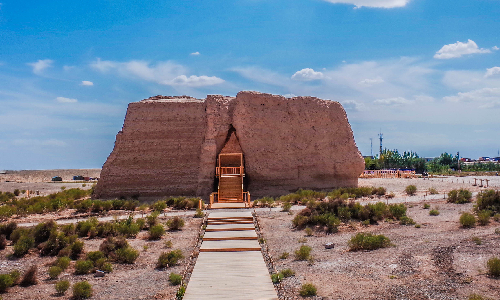
Your guide will meet you at the railway station and arrange your breakfast in a local restaurant.
When you come to Turpan, you may ask: how could there be such a vast oasis in a place as dry as Turpan? What is the secret? The answer would be Karez Irrigation System, also known as Karaz Well, which widely spreads in Turpan and brings water to every household here. Karez Irrigation System, together with the Great Wall and the Beijing-Hangzhou Grand Canal, is known as one of the three major projects in ancient China. It has a history of more than 2,000 years, and until now, it still plays a key role in the agricultural irrigation system in Turpan. Because of its significant function, it is also called an underground canal.
Grape Valley Scenic Area is another famous scenic spot in Turpan you will visit and it is the largest valley in the Flaming Mountains area. It is hot in Turpan during summer, but Grape Valley Scenic Area is an ideal place for avoiding summer heat and going sightseeing. It attracts thousands of tourists every year. You can not only get near to nature and taste the sweetest grapes in the world, but also enjoy the wonderful dance of locals, and the exciting Dawazi performance (a traditional acrobatic performance of the Uygur nationality).
Here are some travel tips when you are in Turpan:
1. Although you won’t be tanned here as Turpan is located in a basin, sunhat, sunglasses, and sun scream are still necessary.
2. Spitting, blowing nose, yawning and other improper behaviors are prohibited during eating and talking.
Lunch will be arranged in a local restaurant. In the afternoon, you will visit Emin Minaret, or Sugong Pagoda, the greatest existing ancient pagoda in Xinjiang Province and the only one among China’s top 100 ancient pagodas in Islamic style. Emin Minaret is decorated with more than 15 kinds of traditional patterns of Uygur nationality on the outside and is supported by a central pillar made of bricks. It was built by a famous official called Emin in the Qing Dynasty (1636-1912) together with his son. The inscription on a stone tablet beside the pagoda expresses the appreciation of Emin and his son to the emperor and the country.
At night, you will stay in a local hotel.
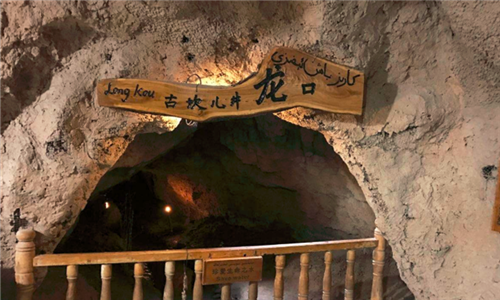
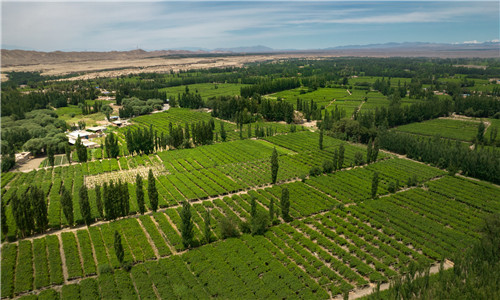
After breakfast, you will visit Jiaohe Ruins. With a history of more than 2,300 years, Jiaohe Ruins is the best-protected earth-constructed city in the world. It has two distinctive features: it has no city walls, and most of the buildings in the city are built by a special method- to dig the earth down from the high terraced surface.
According to historical records, the original Jiaohe City was constructed by the Jushi (the people who established a kingdom called the Jushi Kingdom during the 1st millennium BC in the Turpan basin). However, wars were really frequent at that time. In the middle of the 5th century, troops from central China attacked Jiaohe City to expand their territory and controlled major roads, the king of Jushi was trapped in Jiaohe City. Without enough food, the king finally capitulated and escaped, and his kingdom then vanished. And the Jiaohe City became desolated as time went by. Now it’s called Jiaohe Ruins.
The next attraction, Gaochang Ruins, covering an area of 2 million square meters, is the largest one of its kind. It was once honored as the replica of Chang’an (the ancient name of Xi’an, the capital city of China at that time) in the west region. An archaeologist once said that if you want to know more about Xi’an in its glorious age, just come to Gaochang Ruins in Turpan, you would get your answer. Even after thousands of years, some of its buildings are still kept intact.
After lunch, you will come to Bezeklik Thousand Buddha Caves, which was built in the 4th century. Murals in the caves were rich in contents and bright in color, making this attraction a Buddhist center in ancient times.
Rules for visiting:
1. No photos or videos, or you will be fined and criticized in public.
2. It is not allowed to touch the murals.
3. No smoking in the caves.
The next destination, Flaming Mountains is the hottest place in China. The highest temperature in summer here is 47.8℃ and the highest surface temperature is up to 89℃. There are many sayings about the origin of the Flaming Mountains, here is the most famous one. In Journey to the West, one of China’s four greatest masterpieces, the Monkey King created a tremendous uproar in the Heavenly Palace and kicked down the Eight Trigrams Furnace to the mortal world, burning coals fell to Turpan and formed Flaming Mountains, blocking the road with its flames. That happened when he was working in the Heavenly Palace. Later, when Monkey King accompanied monk Xuanzang on the journey to the west, they were blocked by the Flaming Mountains that he created. So he borrowed a magic palm-leaf fan from Princess Iron Fan and put out the fire, the mountains cooled down and became today’s Flaming Mountains.
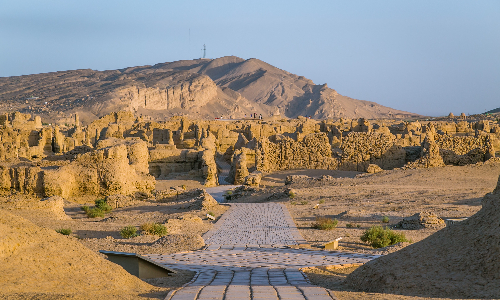
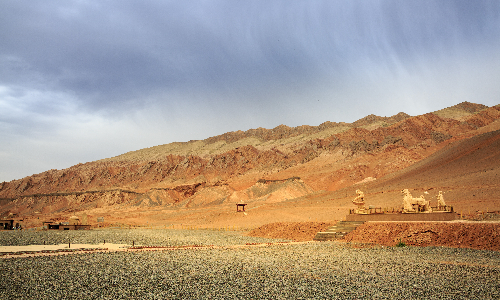
 Urumqi
Urumqi After breakfast, you will take an estimated train Z231 08:31/10:02 to Urumqi. At about 10 am, your guide will meet you at the railway station and drive you to the beautiful Heavenly Lake.
In the folk legend, Queen Mother of the West used to live in Heavenly Lake. It is said that in 989 BC, King Mu of the Zhou Dynasty (1046-256BC) named Ji Man came here and was warmly accepted by Queen Mother of the West. They quickly fell in love. Upon his leaving, Queen Mother of the West asked when he would come back. Ji Man promised that he would come back three years later. She wished him good luck and expected to meet him again. However, Ji Man never returned. But Queen Mother of the West kept waiting till her death. This story has been passed on from generation to generation, and the story makes it a romantic and mysterious destination for many tourists.
Lunch will be arranged in a local restaurant. Then you will go to Xinjiang International Grand Bazaar, the largest bazaar in the world integrating Islamic culture with national characteristics. Here, you can buy garments, handicrafts, cosmetics, fruits, foods, and anything you can imagine. What’s more, you can experience various entertainment activities, and enjoy special local shows if you want.
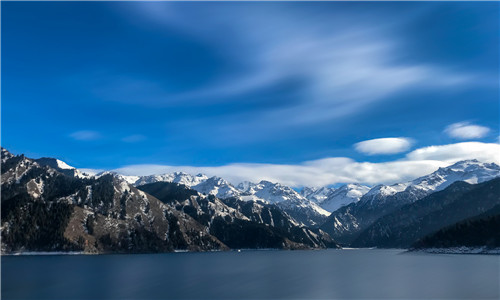
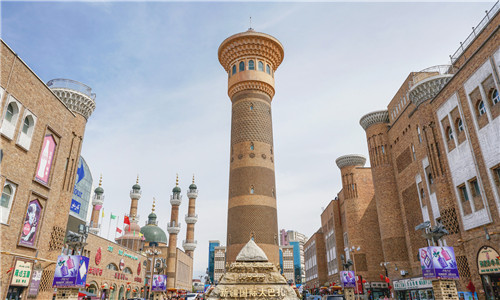
After breakfast, your guide will pick you up at the hotel and escort you to the airport according to your flight schedule. We wish you a pleasant homebound journey.
Author: Hou Qiyue
Proofreader: Li Yiwen
| City | Five Star hotel list | Four Star hotel list |
|---|---|---|
| Lhasa | Shangri-La Hotel, Lhasa | Thangka hotel |
| Shigatse | Qomo Langzong Hotel | Shandong Building |
| Xining | Sofitel Xining | Holiday Inn Xining Hot-Spring |
| Qinghai Lake | Guest Hotel | Guest Hotel |
| Jiayuguan | Jiayuguan Plaza Holiday Inn | Jiugang Hotel |
| Dunhuang | Wan Sheng International Hotel | Grand Sun Hotel Dunhuang |
| Turpan | Jinjiang Metropolo Hotel-Turpan Administration Center | Mercure Hotel Turpan Downtown |
| Urumqi | Grand Mercure Urumqi Hualing | Tumaris Hotel |
 |
![]() About your child or infant, please contact us for a discounted price.
About your child or infant, please contact us for a discounted price.



We started with a few days in Beijing & ended in Shanghai, from where we visited the Forbidden City and Great Wall. In between we visited Terra Cotta Warriors Museum, Panda Base, Shanghai Disneyland.

We had a wonderful holiday in China which will remain long in the memory. China is a breathtakingly beautiful country full of splendid temples and palaces, mountains and rivers, peaceful rural scenes and bustling shopping streets.
 QUICK ENQUIRY
QUICK ENQUIRY